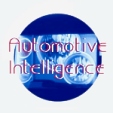
.
.November
05, 2003
.
This Week:
-
Ford Racing's New 5.0-Liter "Cammer" V-8 Crate Engine Offers High Horsepower And Easy Installation
-
Nissan Displays An Array of Performance Vehicles at 2003 SEMA Show
© 1998
- 2003 Copyright &
Disclaimer
Automotive Intelligence,
www.autointell.com
All Rights Reserved .
For questions please contact
editor@autointell.com
.
smart Morphs From Single Car To Range Of Models
U.S. Sales to Begin in 2006 with New U.S.-Specific Vehicle

Photo:
smart/DC
|
Montvale, New Jersey - Only five years after the launch of the smart city-coupe, the success of both the smart brand and the company is recognized throughout the global auto industry. The eye-catching shape of the city coupe has secured its place at the Museum of Modern Art in New York City. To date, it is the only production vehicle to be on display in a museum prior to its discontinuation. With the arrival of the smart cabrio, crossblade, roadster and roadster-coupe models, smart has grown from a single-product company to a multi-car manufacturer. Building on this success, a new smart forfour (the first smart four-door) model will begin production in early 2004 at the NedCar facility in Born, Netherlands, and will go on sale in many markets in the spring. |
|
In 2006, the evolution of smart takes an important step forward when the brand will launch a new sport utility specifically designed for the American consumer. This will be the first smart vehicle to be sold in the U.S., the largest vehicle market in the world.
A New Vehicle Concept
The smart story began in April 1994 with the founding of a joint-venture company called Micro Compact Car AG by Mercedes-Benz AG and SMH, the maker of Swatch watches. Daimler-Benz AG took over the Swatch Group's stake in November 1998, and the approximately 100 smart retail centers in Western Europe became part of the newly merged DaimlerChrysler organization in the following year.
New Car, New Market, New Network
The launch of the two-passenger smart city-coupe in October 1998 marked the debut of the new brand, the birth of a radical new vehicle concept - only eight feet long -- and the development of a previously non-existent market segment. This ambitious launch also involved an innovative distribution network and an entirely new cooperative arrangement between manufacturer and suppliers.
And a New Approach in smartville
Based in the French town of Hambach near the German border, smartville is a unique manufacturing operation that features eleven different plants, many operated by suppliers. To minimize transportation and storage, parts and pre-assembled sections are delivered less than 30 feet from the assembly line. During assembly, each smart vehicle passes through 140 different stations in just 4 ˝ hours. The annual capacity of smartville stands at 120,000 city-coupes and cabrios, with about 2,000 employees working two shifts.
Across the Rhine River in Böblingen, Germany, a new corporate headquarters opened in early 2003 and now boasts nearly 1,400 employees.
A Novel Product Concept
Specially designed for use in large, crowded cities, two smart city-coupes actually fit crosswise in one conventional parking space. The original city-coupe was available with a choice of two different gasoline engines, and a CDI diesel was added for 2000, along with the open-top smart cabrio.
The smart diesel is the best-selling "three-liter" car in the world, a distinction reserved for cars that use less than four liters of fuel per 100 kilometers, which translates to about 60 miles per gallon.
In September 1999, a smart roadster concept was unveiled at the Frankfurt Auto Show, followed by a concept for the smart roadster-coupe a year later at the Paris Show. A smart crossblade show car appeared at the 2001 Geneva Show, and the reaction was so positive that all three models were approved for production.
Solid Market Growth
While the trendsetting smart city-coupe was originally launched in nine European countries, three key markets were added in 2000 - Japan, the United Kingdom and Greece. With continued market development, smart cars are now being sold in most European nations as well as in Taiwan, Hong Kong, South Africa, Israel, Australia and Mexico.
The "smart k" model offered in Japan is exempt from the usual need to show proof of a parking space before purchase, and the car complies with Japanese regulations for "light vehicles," which mean lower tax and insurance rates than conventional cars.
Global market growth has meant solid sales increases for smart every year:
-
1998: 20,000
-
1999: 80,000
-
2000: 102,000
-
2001: 116,000
-
2002: 122,000
Sales are expected to increase again in 2003, due in part to brisk demand for smart roadster and roadster-coupe models. While retail sales began with 100 distribution points, smart vehicles are now available from more than 700 sales partners around the world, each with its own distinctive showroom.
A wide range of photos and resources are available at http://media.smart.com including smart logo; pictograms of all vehicles; cover of the first press kit; city-coupe (1998); crossblade (2002); and forfour (2003).
(Nov. 04, 2003)
| .
Homepage News Companies Management Publications Events Careers Services Discussion Guestbook Search . |